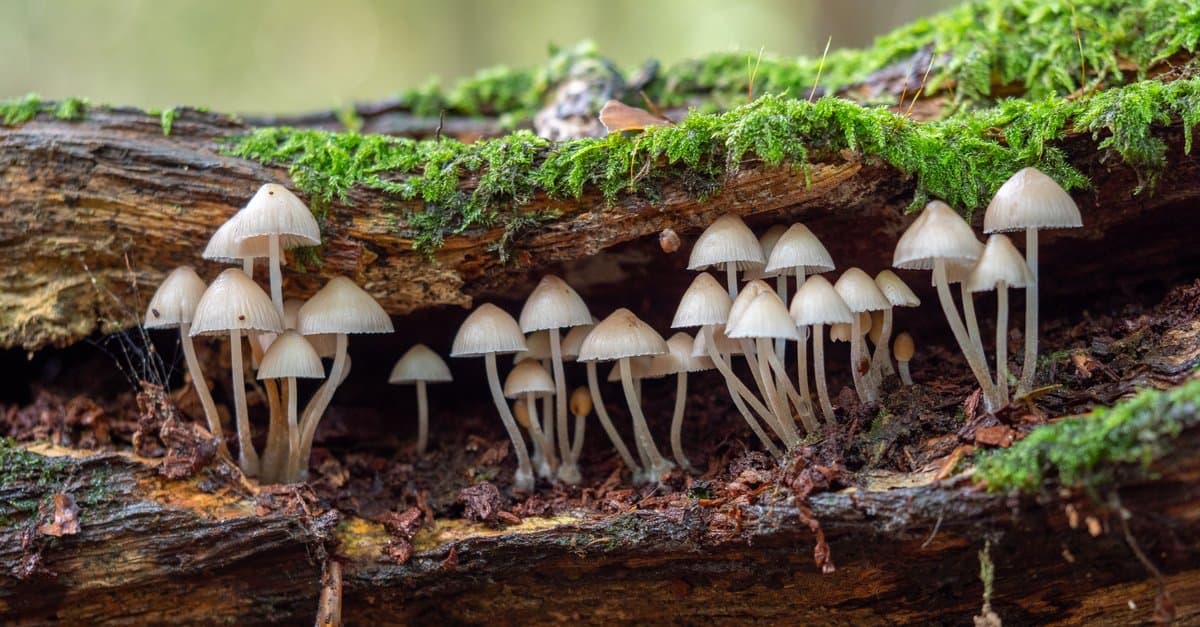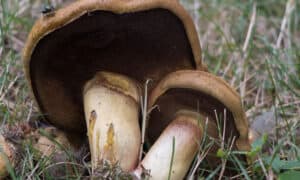The fungi kingdom may have more than three million species, including around 148,000 already classified mildews, mushrooms, molds, rusts, smuts, and yeasts. Like plants and animals, fungi need food, water, and oxygen to stay alive. So, what do fungi eat? It’s pretty easy to determine what they consume by where they grow. Fungi usually attach themselves to their plant or animal food source.
Keep reading to learn more about the fascinating foods different fungi species eat, how they eat, and how their eating habits impact other species and our ecosystem.
What Do Fungi Eat?
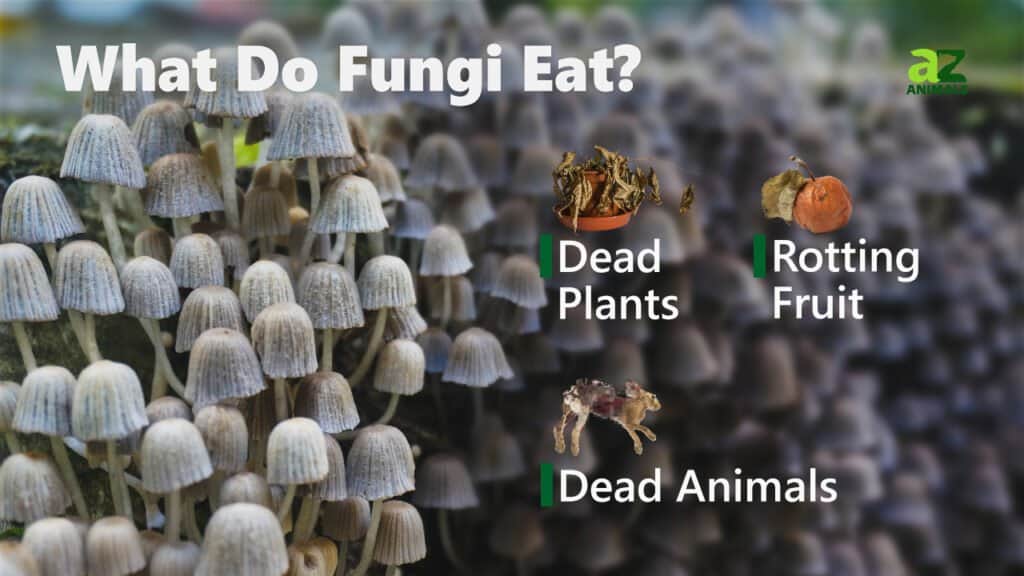
Fungi eat dead and living trees, leaves, plants, fruits, vegetables, and animals. Fungi are omnivores, though some species eat only plants or animals.
All fungi are heterotrophic organisms, which means they rely on getting their nutrients from other organisms and organic matter. In other words, fungi cannot create their own food.
Not making their own food for energy is one reason fungi aren’t classified as plants. A plant absorbs carbon dioxide, water, and minerals. Then, plants absorb sunlight via chlorophyll and convert it to food and energy through photosynthesis. Because they don’t contain chlorophyll, fungi cannot perform photosynthesis.
Common foods fungi eat include:
- Animals
- Detritus (dead organic matter as microscopic particles)
- Fruits
- Leaves
- Plants
- Trees
- Vegetables
What Do Different Types of Fungi Eat?
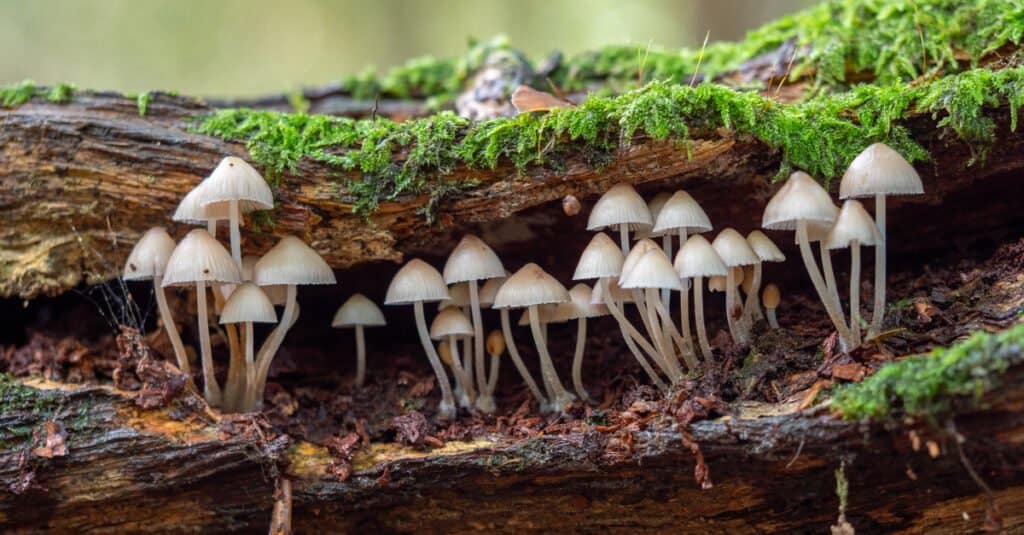
Fungi can either be saprotrophic, parasitic, or mutualistic. Each eats a different type of food.
©Stephan Morris/Shutterstock.com
There are three main types of fungi – saprotrophic, parasitic, and mutualistic. Each type of fungi eats different kinds of food.
- Saprotrophic fungi – An organism is classified as a saprotroph if it eats microscopic dead, decaying organic matter called detritus. Saprotrophic fungi eat detritus after releasing enzymes to break it down even further. Examples of saprotrophs (or saprophytes) in the fungi world include oyster and shiitake mushrooms. These mushrooms grow on dead and decaying trees, helping break them down into microscopic food.
- Parasitic fungi – An organism is classified as a parasite if it feeds from living hosts. Parasitic fungi must live on or inside a living organism. This type of fungi usually causes harm or eventually death to their host. One example of parasitic fungi is powdery mildew that grows on chestnut trees.
- Mutualistic fungi – An organism is classified as mutualistic when it works together with an organism of another species in a mutually-beneficial relationship. Mutualistic fungi barter with their food hosts and don’t harm them. For example, mycorrhizal fungi attach to plant roots to eat their fats and sugars. In exchange, mycorrhizal fungi can break down soil nutrients that plants need but cannot break down themselves.
Metarhizium fungi are mutualistic fungi that are also parasites. This type of fungi releases digestive enzymes on insects. The enzymes eat through insect exoskeletons or outer shells, then the fungi engulf and kill the insects. Metarhizium eat some of their kills and then present some of the nutrients to their plant hosts.
How Do Fungi Eat?
Different species of fungi eat food in different ways. However, most eat by way of absorption, beginning with releasing digestive enzymes into their food.
With the exception of yeast, fungi structures have cells called hyphae in the shape of long, tube-like strands that create a network called mycelium. Hyphae release digestive enzymes into the food source to break it down into edible size and form. Then the food is absorbed into the fungi through their hyphae strands.
How Does What Fungi Eat Impact Other Species?
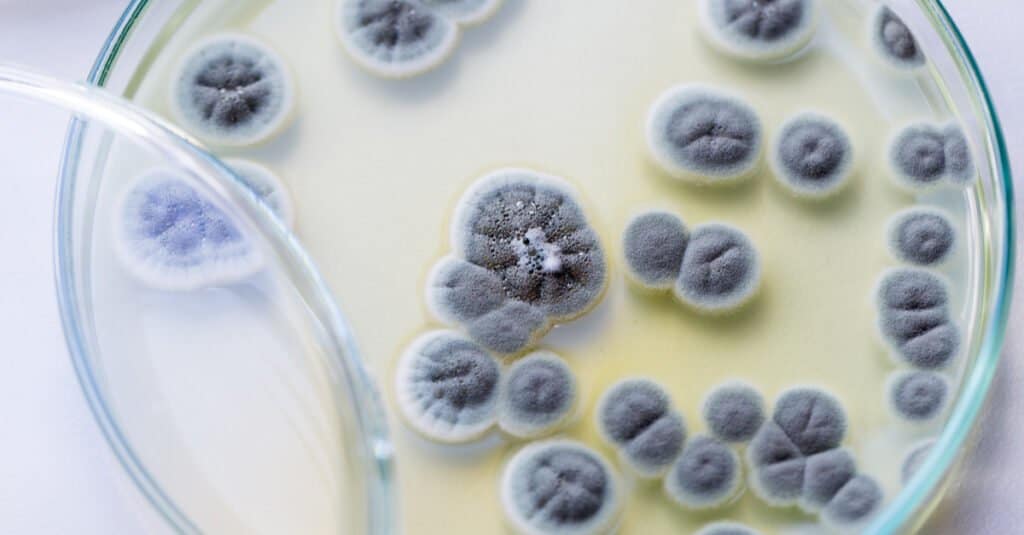
While some bacteria are parasitic, others are essential decomposers in their environments.
©Rattiya Thongdumhyu/Shutterstock.com
Fungi eat living and dead matter that impacts the lives of other beings.
Saprotrophic fungi are essential decomposers in our ecosystem. Decomposers create more food for “primary producers” – organisms that eat non-living matter. For example, mushrooms that feed on dead logs and stumps in a forest break this organic matter down. The remaining nutrients from the decomposed matter are released back into the soil. In this way, what fungi eat nourishes primary producers like plants, phytoplankton, and algae.
Parasitic fungi can cause harm to other species, in particular their food hosts. For example, Candida albicans is a species of fungi you might not be familiar with, but it’s familiar with you. Candida albicans live in the human microbiome and feed mainly from the sugars in the human body. However, if their human host has a compromised immune system, Candida albicans can overgrow and cause troubling symptoms like thrush, digestive issues, and chronic fatigue.
In general, parasitic fungi cause harm to other species. On the other hand, saprotrophic and mutualistic fungi are beneficial in many ways.
The information presented on or through the Website is made available solely for general informational purposes. We do not warrant the accuracy, completeness, or usefulness of this information. Any reliance you place on such information is strictly at your own risk. We disclaim all liability and responsibility arising from any reliance placed on such materials by you or any other visitor to the Website, or by anyone who may be informed of any of its contents. None of the statements or claims on the Website should be taken as medical advice, health advice, or as confirmation that a plant, fungus, or other item is safe for consumption or will provide any health benefits. Anyone considering the health benefits of particular plant, fungus, or other item should first consult with a doctor or other medical professional. The statements made within this Website have not been evaluated by the Food and Drug Administration. These statements are not intended to diagnose, treat, cure or prevent any disease.
Thank you for reading! Have some feedback for us? Contact the AZ Animals editorial team.

